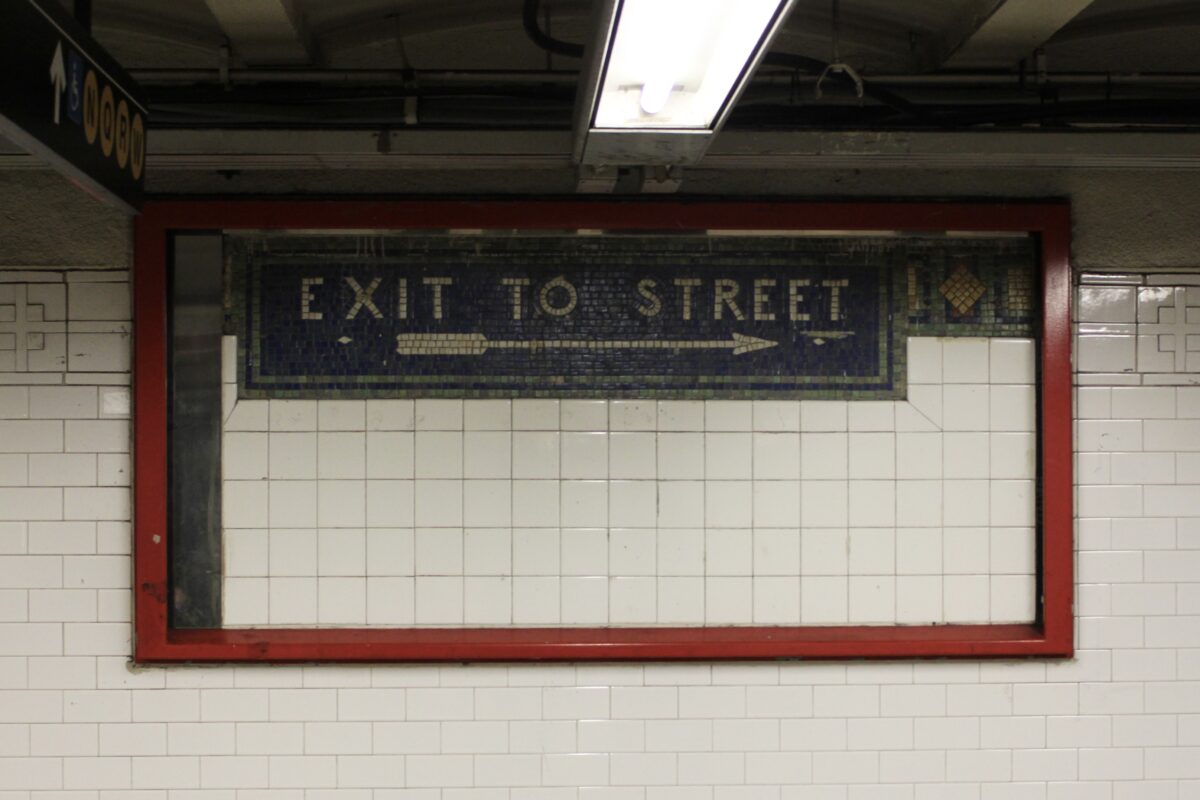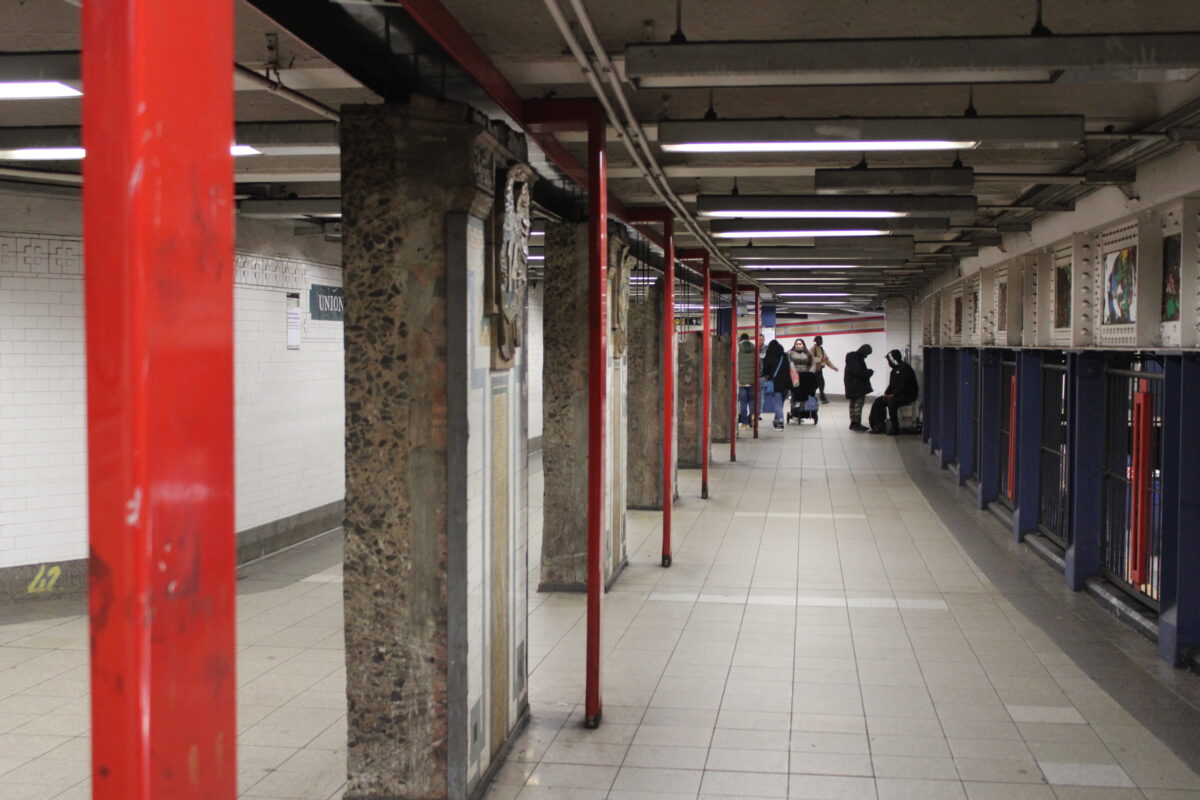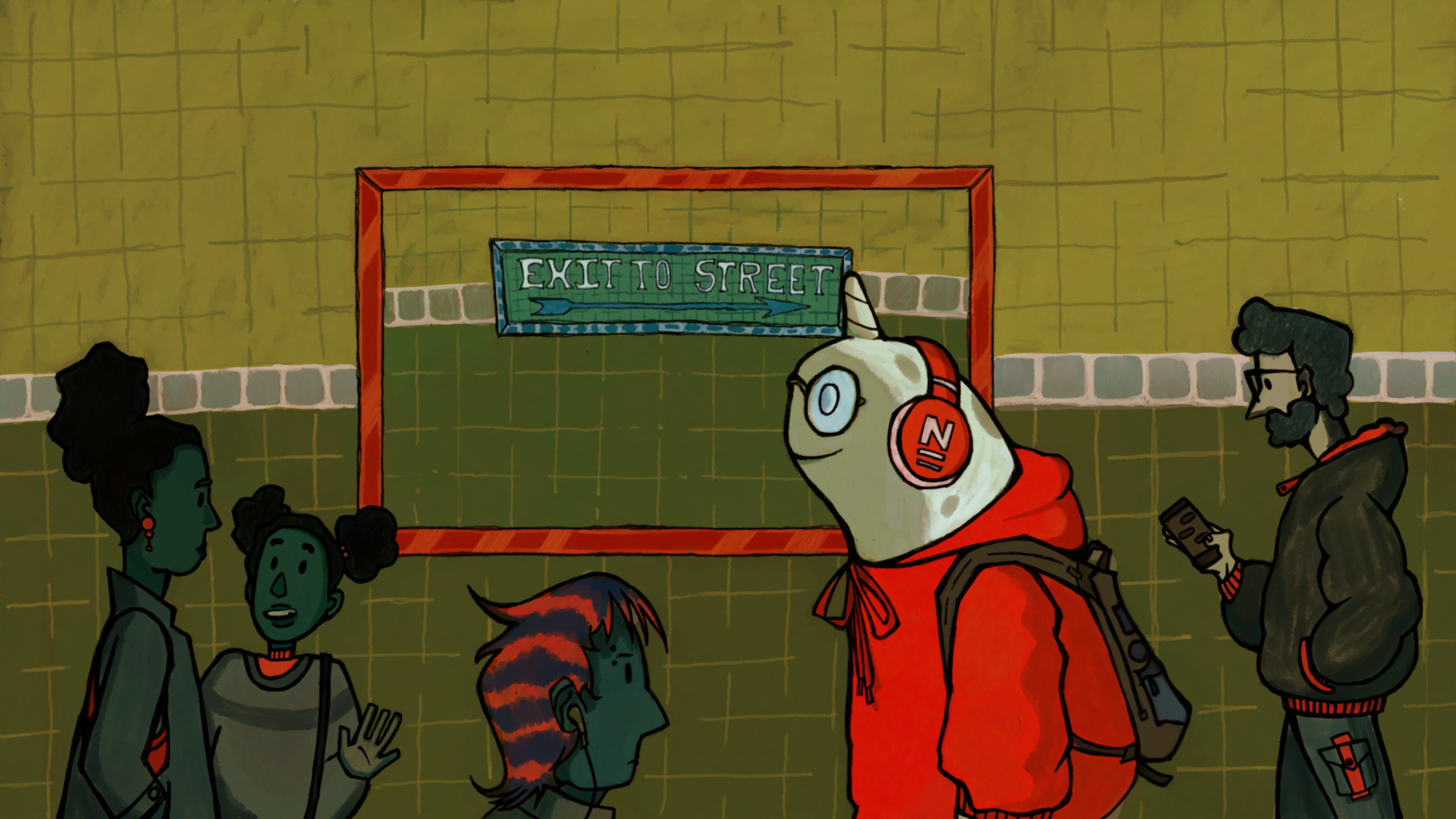The New Review is a biweekly series where writer Kayley Cassidy will examine an art installation or exhibition close to The New School campus. This week, she spent time below the surface at the 14th Street-Union Square subway station, seeing red in “Framing Union Square” by Mary Miss.
For the New School students who commute to campus, you start and end your day of classes standing on a platform. You’ve probably become numb or even senselessly charmed by the sound of screeching trains and the smell of hot garbage that always lingers beneath the surface. By now you might even call one of our closest hubs of transportation home — the 14th Street-Union Square subway station.
I hope you’re not too numb though. There’s so much more to this station than you might realize. Between the daily hassle of competing with finance bros on the way to your 9 a.m. and the glances you make at the same dedicated artists who perform all day and night, you might fail to recognize a camouflaged art installation throughout this vast station.
Regardless of what entrance you choose at the 14th Street station on your daily sprint to the train, you might miss the bold red beams and frames scattered consistently throughout the entire station. The beams stand in the way of the commuters, and though the frames catch the travelers’ eye from a distance, neither provoke a second glance. Don’t let the red deceive you; these are not pipes or forgotten infrastructure. These symbols of Union Square’s past are now part of your present.
Commissioned by the MTA and installed in 1998, “Framing Union Square” is American artist Mary Miss’s collaboration with architect Lee Harris Pomeroy. It emphasizes the art of close looking and challenges the viewer’s ability to understand the city’s present through the past. In the early 1900s, the city’s subway system was split into three separate companies: Interborough Rapid Transit Company, the city-owned Independent Subway System, and the Brooklyn-Manhattan Transit Company. The three companies decided to unify in 1940, leading to the creation of New York City Transit in 1953, which brought together their three separate subway lines. Thus, the Union Square Subway station was born.
What does transit history have to do with Mary Miss? Everything. Miss is an artist, designer, and sculptor whose works are always in collaboration with different places. She’s created many permanent public projects and has built a reputation in the art world for her dedication to environmentalism. Besides the Union Square subway station, you’ve probably seen remnants of her past work at the tip of Manhattan in Battery Park. Her installation “South Cove” transforms the land with an esplanade that stretches beyond the water to create a space where one can coexist with nature in an urban setting. Honey locust trees and fluffy grass delicately form a walkway, bringing nature to an area of the city that primarily consists of cement.
However, “Framing Union Square” is different from her other works. Miss blurs the lines between the public and the people situated beneath the surface. She physically puts the past in the present-day 14th Street-Union Square subway station. You can see red from almost anywhere underground; according to 6sqft there are 115 distinct red frames intentionally placed to draw attention to relics from the past.
If you’re walking to or from the L train, you’ll notice chunky, uneven cement slabs in a line along the underpass with red beams surrounding them. These cement slabs are decaying, described by the MTA as “terracotta eagles with tilework” from the original 14th Street station in 1904. Directly across from the slabs and ingrained into the railings, is the same red in the form of frames instead of beams. They symbolize the historical significance of the station and its structure formed in the 1900s.
The red calls to you, grabbing your attention, confronting you with the heart of history, whether you realize it or not.
Besides the beams and railings, there are red frames along the walls. If you’re walking toward the uptown 6 train, you’ll spot a white arrow along the wall in blue tile below the words “exit to the street.” What can be assumed to be a regular exit sign is actually an original mosaic from the 1900s.
There’s serenity in the bluish-tanned toned pieces of the mosaic, but the red is always there. These works are a time machine, a past representation of the MTA system — flaws and all. The beams and frames are symbols, highlighting the intricacies and complexities of the subway from a historical and cultural standpoint. It’s physical proof of the subway system that exists today.

If you put your hands up and say you don’t have the time to notice such things, I’ll understand. But hear me out. In a city that can be either your best lover or worst enemy, a place that will trip you and trample on you if you don’t get up fast enough, you’ve probably been advised to stay on your toes. Keep your head down, walk fast, and don’t make eye contact. That’s the basic etiquette of survival in New York City.
But sometimes slowing down and taking notice of your surroundings isn’t a bad thing. You don’t always have to be in a rush or on the run, though it might feel that way. Take a breath and look up once in a while; it’s good for you, I promise. This city existed before you and will continue to exist after you. What will you leave behind when you’ve moved on, and what will you take with you?
On that point, you can learn a thing or two from the unerasable red details that line the interior of the station.
When you are late to class because of delays and service disruptions, think about the red and the history framed within them. If you have ever considered why the subway system is not always wheelchair accessible, examine the aging infrastructure displayed and consider what policies and systems make the MTA the way it is. Most importantly, violence, harassment, and death are realities that occur way too often underground, even at 14th Street-Union Square. But all of these factors, these things we experience either first or secondhand, have become a result of these archival structures framed.

Miss reflects the importance of learning in “Framing Union Square.” Knowing the history of a land, the context of a place, and its discontents will only benefit your understanding of the world around you. For New Yorkers, but especially for newbies and perhaps New School students, you should challenge yourself to consider how the past has created the present. The city is your oyster, but the meat is slowly separating from its shell. The city is rapidly changing.
So when you come across rare pearls or see red in the depths of Union Square, appreciate it while you can. Remnants of New York City’s past are quickly fading.








Leave a Reply